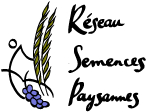Niveau juridique : Union européenne
Texte de la question :
« Flavescence dorée, together with its vector, Scaphoideus titanus (American grapevine leafhopper), is among the principal threats to wine growing in many countries of the European Union. The disease leaves its mark on leaves, shoots and grape clusters, rarely killing the affected plants but causing a gradual decline in plant quality and hence productivity. In order to contain the disease, the vines in question need to be quarantined and the infected plants cut down. Esca, on the other hand, is a grapevine trunk disease associated with different pathogenic fungi colonising lymphatic flux and woody tissue, thereby hampering the transmission of water and nutrients from the roots upward. While this disease has traditionally been associated with older vines, it is now widespread in many European wine-growing areas and is seriously damaging more recent plantings also.
In view of this:
1. Has the Commission assessed the actual or potential impact of the spread of Flavescence dorée and Esca on jobs in the agricultural and wine sector, especially in the context of the ongoing pandemic?
2. Is it planning to take appropriate legislative and administrative steps to facilitate the containment of Flavescence dorée and Esca as swiftly and effectively as possible? »
Réponse de Mme. Kyriakides au nom de la Commission européenne :
« The Commission is aware of the devastating effects of Flavescence dorée phytoplasma and Esca disease.Flavescence dorée phytoplasma is regulated as a Union quarantine pest listed in Annex II, part B of Commission Implementing Regulation 2019/2072, as a pest known to occur in the Union territory. Moreover, specific internal movement requirements exist for plants for planting of Vitis. In the areas of the EU where the pest is present, annual eradication campaigns have to be carried out in the vineyards. Currently, a draft Commission Implementing Regulation with a containment approach for areas where it has been shown that eradication is not possible is being analysed by the relevant Regulatory Committee.When assessing which pests were to be included in the list of priority pests, the Commission evaluated that in a situation of maximum spread assuming that farmers and foresters maintain current management practices, this pest could put at risk more than 20,000 jobs in the grape growing sector alone. For additional details, the Commission refers the Honourable Member to its report on the Impact Indicator for Priority Pests. Esca is a complex disease, as a number of pathogens and the interaction with abiotic factors have been implicated in the disease development. Given this complexity, regulation as a quarantine pest or as regulated non-quarantine pests for the marketing of propagating material is currently not possible. The Commission has not carried out any analysis of its potential impact. The Horizon 2020 project WINETWORK had built a knowledge reservoir on Flavescence dorée phytoplasma and Esca disease of existing scientific and practical knowledge related to sustainable vineyard management, which is available in various languages. »
Lien vers la page de la question ICI.
